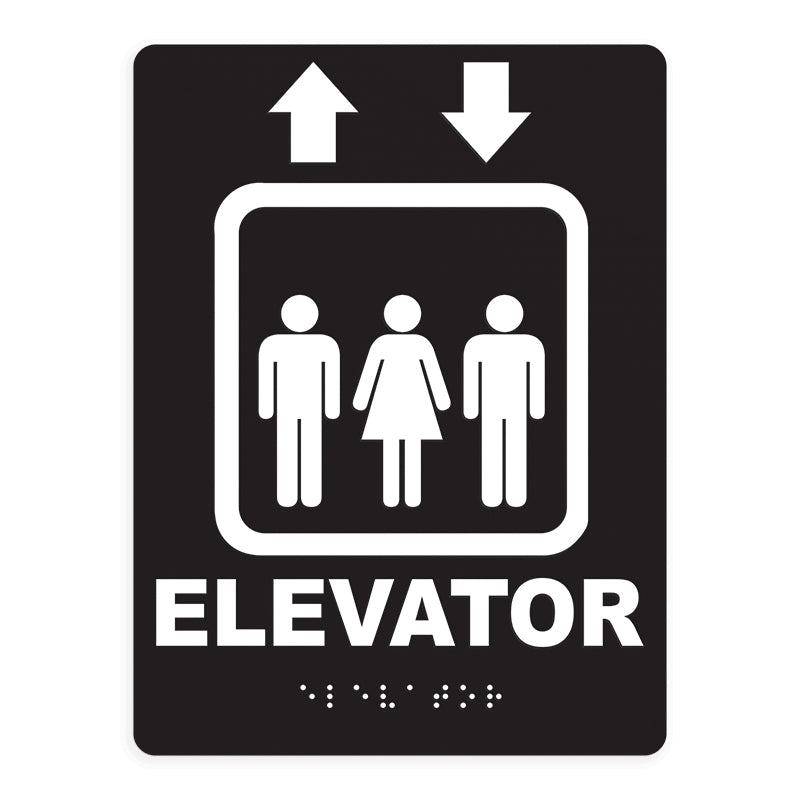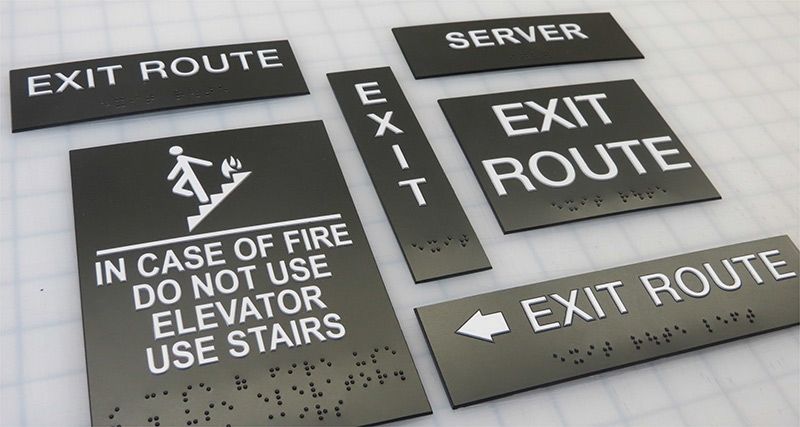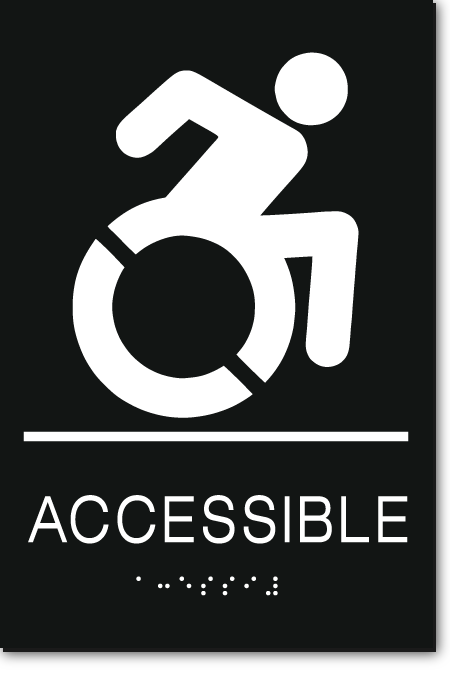Checking Out the Trick Functions of ADA Signs for Improved Access
In the world of access, ADA signs act as silent yet effective allies, making certain that spaces are navigable and inclusive for individuals with handicaps. By incorporating Braille and tactile aspects, these indicators damage obstacles for the visually impaired, while high-contrast color design and clear fonts accommodate varied visual demands. Their calculated positioning is not approximate but rather a calculated initiative to promote smooth navigation. Yet, past these features lies a much deeper narrative concerning the evolution of inclusivity and the ongoing dedication to developing equitable spaces. What a lot more could these indications symbolize in our search of global availability?
Relevance of ADA Conformity
Guaranteeing compliance with the Americans with Disabilities Act (ADA) is crucial for fostering inclusivity and equal gain access to in public rooms and offices. The ADA, passed in 1990, mandates that all public centers, employers, and transport solutions accommodate individuals with disabilities, ensuring they take pleasure in the very same rights and chances as others. Conformity with ADA requirements not only fulfills legal commitments however also boosts a company's online reputation by showing its commitment to diversity and inclusivity.
One of the crucial facets of ADA conformity is the application of available signs. ADA signs are created to guarantee that people with specials needs can easily navigate via structures and rooms. These indications should comply with details standards regarding size, typeface, color comparison, and placement to guarantee exposure and readability for all. Properly carried out ADA signage assists remove barriers that individuals with specials needs usually encounter, thereby promoting their independence and self-confidence (ADA Signs).
Moreover, sticking to ADA regulations can mitigate the danger of legal effects and possible fines. Organizations that fall short to follow ADA standards might encounter legal actions or charges, which can be both monetarily burdensome and harmful to their public image. Therefore, ADA compliance is integral to cultivating an equitable atmosphere for every person.
Braille and Tactile Components
The consolidation of Braille and tactile elements into ADA signage symbolizes the principles of accessibility and inclusivity. It is commonly placed below the equivalent text on signs to make certain that individuals can access the details without aesthetic aid.
Tactile components prolong past Braille and include raised personalities and icons. These components are designed to be discernible by touch, enabling people to recognize area numbers, washrooms, leaves, and various other critical locations. The ADA sets specific guidelines pertaining to the size, spacing, and positioning of these responsive components to maximize readability and ensure consistency across different atmospheres.

High-Contrast Shade Plans
High-contrast color design play a pivotal role in enhancing the presence and readability of ADA signs for people with aesthetic disabilities. These systems are important as they make the most of the difference in light reflectance between message and background, making certain that indications are easily discernible, also from a range. The Americans with Disabilities Act (ADA) mandates using certain color contrasts to fit those with limited vision, making it an important facet of compliance.
The efficacy of high-contrast shades hinges on their capability to stand out in different illumination conditions, consisting of dimly lit environments and locations with glare. Usually, dark text on a light history or light message on a dark background is used to achieve optimal contrast. Black text on a white or yellow background supplies a plain aesthetic distinction that assists in fast acknowledgment and understanding.

Legible Fonts and Text Dimension
When taking into consideration the design of ADA signage, the selection of clear typefaces and suitable message size can not be overemphasized. The Americans with Disabilities Act (ADA) mandates that font styles need to be sans-serif and not italic, oblique, manuscript, very ornamental, or of uncommon form.
According to ADA standards, the minimum message height need to be 5/8 inch, and it must increase proportionally with checking out distance. Uniformity in text size adds to a cohesive aesthetic experience, helping individuals in browsing settings effectively.
Additionally, spacing between find more lines and letters is integral to legibility. Adequate spacing protects against personalities from showing up crowded, enhancing readability. By sticking to these standards, designers can significantly enhance access, making certain that signs offers its designated function for all individuals, no matter of their visual abilities.
Efficient Positioning Techniques
Strategic placement of ADA signage is necessary for taking full advantage of ease of access and making certain site link compliance with legal standards. Effectively located indications lead individuals with specials needs successfully, assisting in navigating in public rooms. Key factors to consider include height, closeness, and visibility. ADA standards specify that signs ought to be mounted at a height in between 48 to 60 inches from the ground to guarantee they are within the line of sight for both standing and seated people. This typical height array is important for inclusivity, enabling mobility device customers and individuals of varying heights to access details easily.
In addition, indicators should be placed nearby to the latch side of doors to allow simple identification before access. This placement helps people situate rooms and spaces without blockage. In situations where there is no door, indicators ought to be located on the local nearby wall surface. Uniformity in sign positioning throughout a facility boosts predictability, minimizing confusion and enhancing total individual experience.

Final Thought
ADA indicators play a vital function in promoting access by integrating functions that attend to the requirements of people with disabilities. These aspects jointly promote an inclusive setting, emphasizing the importance of ADA compliance in making certain equivalent access for all.
In the world of access, ADA indicators offer as quiet yet powerful allies, guaranteeing that spaces are navigable and comprehensive for people with specials needs. The ADA, established in 1990, mandates that all public centers, employers, and transport services fit check these guys out people with handicaps, guaranteeing they enjoy the exact same civil liberties and possibilities as others. ADA Signs. ADA signs are created to make certain that people with specials needs can conveniently navigate with buildings and spaces. ADA standards state that signs ought to be mounted at a height in between 48 to 60 inches from the ground to guarantee they are within the line of sight for both standing and seated people.ADA indications play a crucial role in advertising ease of access by incorporating features that attend to the demands of people with handicaps
 Neve Campbell Then & Now!
Neve Campbell Then & Now! Michael J. Fox Then & Now!
Michael J. Fox Then & Now! Michael Jordan Then & Now!
Michael Jordan Then & Now! Richard Thomas Then & Now!
Richard Thomas Then & Now! Dawn Wells Then & Now!
Dawn Wells Then & Now!